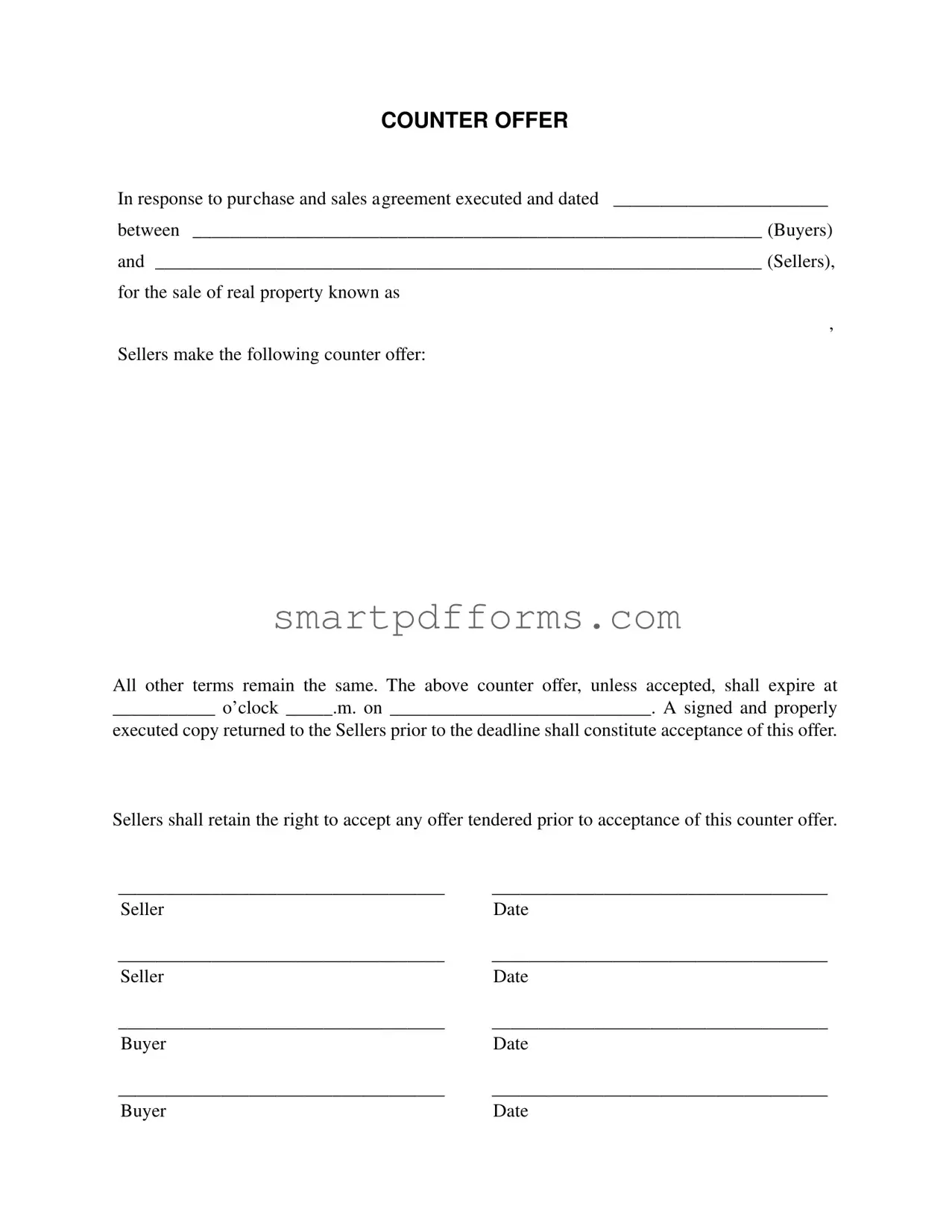Blank Counter Offer PDF Template
A Counter Offer form serves as a response to an initial purchase and sales agreement, presenting a new set of terms while retaining the original deal's core components. This alteration allows sellers to modify the agreement's terms, including the sale price or closing conditions, before final acceptance. Should individuals be ready to engage in this pivotal stage of negotiation, they're encouraged to complete the form by clicking the button below.
Make This Document Now
